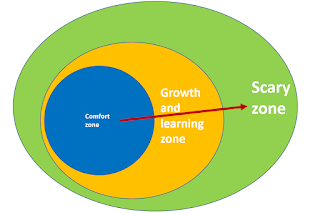Today was all about writing an exam but I took a little time out to record a new podcast on the antenatal ultrasound appearances of the renal tract. To improve the sound quality I used a trick stolen from my daughter and hid under a quilt to record. Ruby has now adopted the quilt and I fear that I am not allowed to move my chair to get up as the quilt is partly resting on it!
I hope you find the podcast useful, it is a brief overview of the embryology, normal sonographic appearance and anomalies of the renal tract. The reference list and bibliography used in constructing the pod is below.
As always, the pod is designed for development of knowledge base and is based on evidence available at the time of writing. It does not constitute advice or guidance for practice, please refer to your local protocols and national guidance. If you become aware of any new evidence which contradicts or develops any of the content, or you wish to discuss any of the points raised, please let me know on twitter @peabodysono or via the blog.
References
Avni, F.E., Garel, C., Cassart, M., D'Haene, N., Hall, M.
& Riccabona, M. 2012, "Imaging and classification of congenital cystic
renal diseases",
AJR. American journal of roentgenology, vol. 198,
no. 5, pp. 1004-1013.
https://www.ajronline.org/doi/full/10.2214/AJR.11.8083
(accessed 4th December 2019)
Bornes, M., Spaggiari, E., Schmitz, T., Dreux, S.,
Czerkiewicz, I., Delezoide, A., El‐Ghoneimi, A., Oury, J. & Muller, F.
2013, "Outcome and etiologies of fetal megacystis according to the
gestational age at diagnosis",
Prenatal Diagnosis, vol. 33, no. 12,
pp. 1162-1166.
Chiodini, B., Ghassemi, M., Khelif, K. & Ismaili, K.
2019, "Clinical Outcome of Children With Antenatally Diagnosed
Hydronephrosis",
Frontiers in pediatrics, vol. 7, pp. 103.
Cuckow, P.M., Nyirady, P. & Winyard, P.J.D. 2001,
"Normal and abnormal development of the urogenital tract",
Prenatal
Diagnosis, vol. 21, no. 11, pp. 908-916.
Dias, Tiran, MD (Obs & Gyn), MRCOG (UK), MD-Research
(London), Dip (Fetal Med) UK, Sairam, Shanthi, MBBS, MRCOG & Kumarasiri,
S., MBBS 2014, "Ultrasound diagnosis of fetal renal abnormalities",
Best
Practice & Research: Clinical Obstetrics & Gynaecology, vol. 28,
no. 3, pp. 403-415.
Fontanella, F., Maggio, L., Verheij, J., Duin, L.K., van
Scheltema, P. N. A, Cohen-Overbeek, T., Pajkrt, E., Bekker, M., Willekes, C.,
Bax, C., Gracchi, V., Oepkes, D. & Bilardo, C.M. 2019, "Fetal
megacystis: a lot more than LUTO",
Ultrasound in Obstetrics and
Gynecology, vol. 53, no. 6, pp. 779-787.
Friedman, M.A., Aguilar, L., Heyward, Q., Wheeler, C. &
Caldamone, A. 2018, "Screening for Mullerian anomalies in patients with
unilateral renal agenesis: Leveraging early detection to prevent
complications",
Journal of Pediatric Urology, vol. 14, no. 2, pp.
144-149.
Kang, M., Kim, Y.C., Lee, H., Kim, D.K., Oh, K., Joo, K.W.,
Kim, Y.S., Chin, H.J. & Han, S.S. 2019, "Renal outcomes in adult
patients with horseshoe kidney",
Nephrology Dialysis Transplantation.
Liao, A.W., Sebire, N.J., Geerts, L., Cicero, S. &
Nicolaides, K.H. 2003, "Megacystis at 10–14 weeks of gestation:
chromosomal defects and outcome according to bladder length",
Ultrasound
in Obstetrics and Gynecology, vol. 21, no. 4, pp. 338-341.
McPherson, E (2007) 'Renal anomalies in families of
individuals with congenital solitary kidney ',
Genetics in Medicine, Vol.
9(No. 5), pp. 298 - 302.
Nguyen, H.T., Herndon, C.D.A., Cooper, C., Gatti, J.,
Kirsch, A., Kokorowski, P., Lee, R., Perez-Brayfield, M., Metcalfe, P., Yerkes,
E., Cendron, M. & Campbell, J.B. 2010, "The Society for Fetal Urology
consensus statement on the evaluation and management of antenatal
hydronephrosis",
Journal of Pediatric Urology, vol. 6, no. 3, pp.
212-231.
Policiano, C., Djokovic, D., Carvalho, R., Monteiro, C., Melo,
M.A. & Graça, L.M. 2015, "Ultrasound antenatal detection of urinary
tract anomalies in the last decade: outcome and prognosis",
The Journal
of Maternal-Fetal & Neonatal Medicine, vol. 28, no. 8, pp. 959-963.
Public Health England (2019)
National Congenital Anomaly
and Rare Disease Registration Service, NCARDRS congenital anomaly statistics
2017: tables, Available at:
https://www.gov.uk/government/publications/ncardrs-congenital-anomaly-annual-data
(Accessed: 4th December 2019).
Public Health England (2019)
National Congenital Anomaly
and Rare Disease Registration Service Congenital anomaly statistics 2017, Available
at:
https://www.gov.uk/government/publications/ncardrs-congenital-anomaly-annual-data
(Accessed: 4th December 2019).
Sairam, S., Al‐Habib, A., Sasson, S. & Thilaganathan, B.
2001, "Natural history of fetal hydronephrosis diagnosed on mid‐trimester
ultrasound",
Ultrasound in Obstetrics and Gynecology, vol. 17, no.
3, pp. 191-196.
Yulia, A. & Winyard, P. 2018, "Management of
antenatally detected kidney malformations",
Early Human Development, vol.
126, pp. 38-46.


